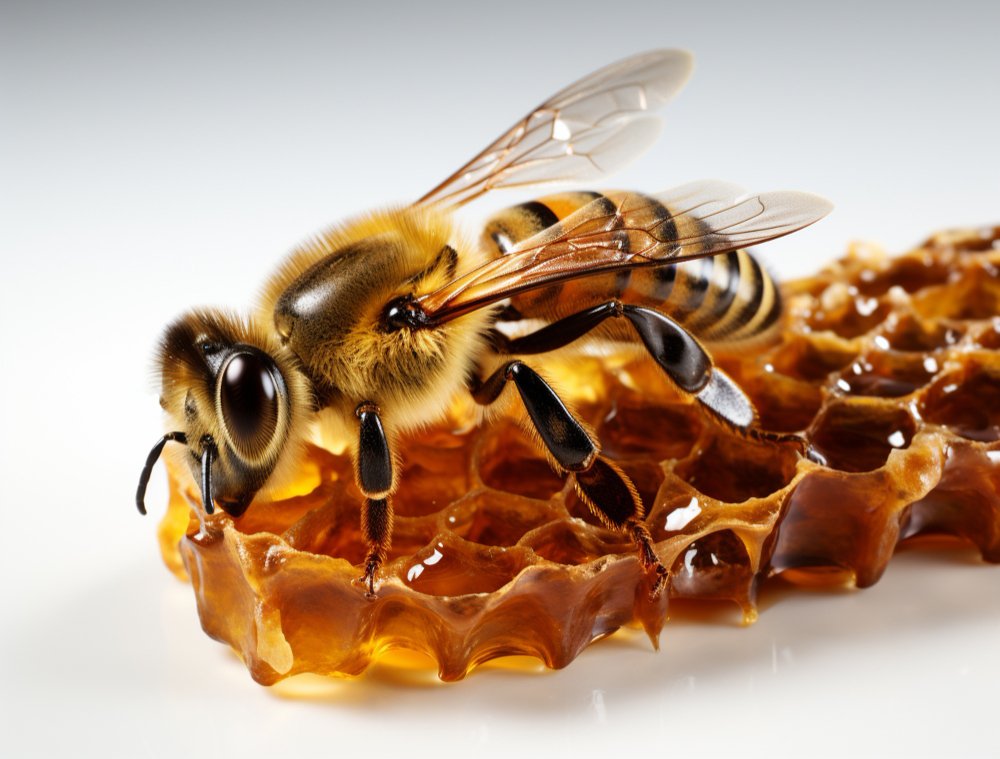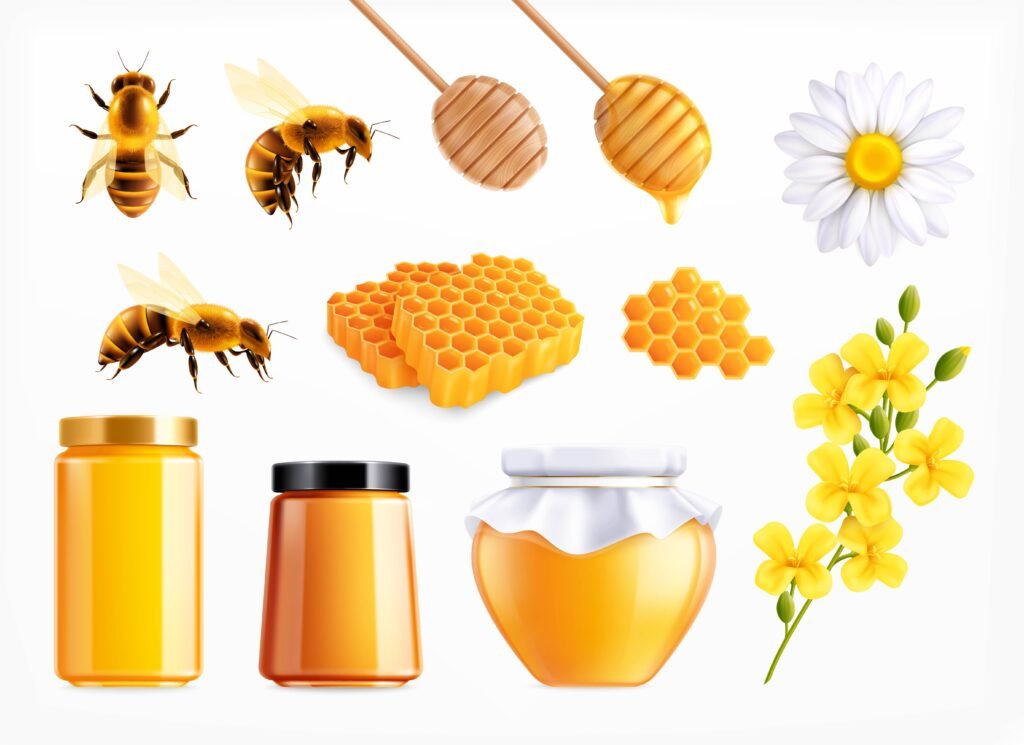
1. Types of Bees: There are different kinds of bees including honey bees, bumblebees, carpenter bees, solitary bees etc, each playing its unique roles in pollination and ecosystem health.
2. Importance of Bees: Bees are essential for pollinating many plant species including human food crops among others. Global ecosystems would be greatly affected if there were no combination of agriculture systems and natural ecosystems thus making them interdependent.
3. Honey Bees vs. Bumblebees: Although both honeybees (Apis mellifera) as well as bumblebees are important pollinators they still have some differences such as appearances, behaviours or even nesting habits respectively. Honeybees live in colonies with complex social structures whereas bumblebees most often live solitarily or sometimes for a few numbers per colony.
4. Bee Facts: Communication is through dancing where various dances communicate information concerning food distance availability besides there is nectar storage which serves as their supply store, apart from that these insects possess a hierarchical society having roles like Queen Bee Drones Worker Bee etcetera. They find their way by avoiding direct light but rather follow sun rays.
5. Threats to Bee Population: The threats posed to the population include habitat loss, pesticides, climate change issues and diseases among other factors that affect bee populations in general. To sustain pollination services as well as the ecosystem’s health, conservation efforts must be implemented to protect these bee populations.
What are bees?
Bees are small flying insects known for their role in pollination and honey production. They belong to the order Hymenoptera, which also includes ants and wasps. There are over 20,000 known species of bees divided into seven recognized biological families. The most familiar bee is that of the honeybee (genus Apis), which forms colonies and produces honey. Bumblebees, carpenter bees and solitary bees are also important.
The transfer of pollen from male to female parts of a flower enables fertilisation which gives rise to fruits and seeds hence it forms an important element in the reproduction strategy for many crop plants as well as wild plants. Bees are key pollinators in ecosystems and agriculture because they help move pollen from one part of a flowering plant to another.
Normally, a bee colony consists of only a single queen bee, hundreds or even thousands of worker bees (sterile females) and a few males called drones while others have up to several thousand individuals. The queen is responsible for egg laying. On the other hand, workers collect nectar and pollen at the hives protecting it while drones mate with the queen after which they die soon after mating.
History Of Bees
Throughout history, bees have held a significant place in various cultures worldwide. Ancient civilizations, like the Egyptians, Greeks, and Romans, revered bees as symbols of immortality, resurrection, and industriousness. The Egyptians associated bees with their sun god Ra and used hieroglyphics to depict bees and honeycombs. In Greek mythology, bees were linked to deities like Demeter, the goddess of agriculture, and Artemis, the goddess of wilderness and fertility.
Furthermore, the importance of bees extends beyond symbolism. Archaeological findings indicate the widespread use of beeswax in ancient societies for various purposes, including as a binding agent in pottery, as fuel for lamps, and in mummification processes. Beeswax’s durability and versatility made it invaluable in preserving artefacts and manuscripts.
Nowadays, it is important to recognize that bees continue to serve an essential purpose within ecosystems by way of their pollination activities, which facilitate the reproduction of many plant species including certain crops that are vital for human survival. On the other hand, several challenges are threatening these insects such as habitat loss, exposure to pesticides and diseases thereby necessitating conservation strategies to protect bee populations and ecosystem services they provide in agriculture.
Importance of bees

Bees, although tiny creatures have a great impact on the planet’s biosphere.
Pollination
Bees also play the role of pollinators. They suck nectar from plants, swallow it and by chance get some small grains of pollen from flowers onto themselves. This way they gender different crops such as fruits, among others and therefore maintain biodiversity while securing food.
Making Honey
The making of honey by bees is seen as an example for other animals with their industrious nature. It involves a lot of complex activities taking place within hives after the removal of nectar from blossoms. Furthermore, apart from adding sweetness to everyday diets, they also possess numerous advantages such as antioxidant properties as well as possible antiseptic potentials.
Medicinal use
For several years now there has been medicinal beekeeping. Many bioactive compounds and nutrients that are found in common bee products like propolis; honey; royal jelly and pollen can be used as traditional medicines for various conditions. Examples include corn syrup remedies to natural healing accelerants found in honey products.
Are Honey Bees and Bumblebees the same?
Though both belong to the Apidae family, these two types do not come from a single species name or classification.
Honeybees are known for producing more honey than any other type of bee in the world. Hives made either by human beings or naturally host eggs laid by a queen where worker bees together with drones carry out tasks in a highly organized society. However, bumblebees look fat when next to honeybees even though they may differ slightly in size aspects.
On the other hand, bumblebees prefer living underground or in grassy areas due to small size colonies thus distinguishing them from honeybee populations which are very skinny but covered with many hairs all over their bodies. Moreover, unlike some other groups including bumblebee ones which could gather much more during one year (for example 12 months), these gave little amounts. Besides, bumblebees are more effective in some plants compared to others because of their buzz pollination caused by the ability to shake out pollen from flowers. The variation between honey bees and bumble bees goes beyond their habitat preferences, for starters, there can be mentioned dimensions, traits, and features of social organisation.
5 Interesting Bee Facts:
These buzzing insects which we often dismiss have interesting qualities that make them valuable participants within our ecosystems. The following bee facts will show you how amazing they are and highlight their importance:
1. Diverse Species: When we think of bees, honey bees often come to mind, but there’s a rich tapestry of bee species beyond them. Over 20k bee species exist worldwide ranging from tiny stingless to large carpenter ones. Each species has its behaviours and roles within ecosystems hence promoting biodiversity.
2. Incredible Pollinators: Bees play a vital role in pollinating flowering plants including many crops relied on by humans for food. They do this by visiting flowers where they gather nectar and pollen either for themselves or feeding their colonies respectively. Their body hairiness together with specialised structures like the presence of pollen baskets at hind legs enable them to collect pollen from one blossom onto another thereby enhancing the fertilisation process.
3. Complex Societies: The social structure of a beehive is so intricate in such a way that it has different individuals having specific roles within the colony. The centre of the hive contains the queen bee which lays eggs and helps maintain population. Foraging, nursing, defending and nest building are some of the various duties that are performed by worker bees who are females mostly. Drones on their part only have one responsibility which is copulating with the queen bee. This complicated social structure acts as an avenue to keep the colony sustainable.
4. Remarkable Communication: Bees communicate through pheromones or extremely difficult dances. For example, when a forager bee finds abundant sources of nectar, it returns to its hive and performs waggle dancing which tells other workers how far this source of food is from them and where it lies. In this manner, they can efficiently exploit food resources at hand by relying on this kind of communication.
5. Threatened Existence: Bees are, however important for ecosystems and agriculture, facing different perils such as loss of their natural habitat and exposure to pesticides.
FAQ:
Honeybees have a social organisation with a structured hierarchy they collect nectar and pollen to feed the hive and make honey. The hive provides protection, shelter and brood-rearing area.
Beekeeping also called Apiculture implies raising or rearing bees primarily for pollination services, honey production or other purposes like beeswax or royal jelly making. Beekeepers keep hives in which they control colonies of bees so that they remain healthy with high production levels.
Bees foragers pick pollen from flowers mixed with some nectar or saliva forming small granules that are kept on hind legs known as corbiculae or pollen baskets. The hive then stores this collected food mainly used for the development of young ones in the colony.
Bees require queens who enhance continuity and stability and hence must fertilise eggs to boost the size plus longevity of each specific division engaged in reproduction ending its life otherwise. Furthermore, the absence of pheromones released by queens would result in unusual behaviour patterns causing infertility among other members within the bee society eventually while lack would lead to reduced populations culminating in distant fatality at last.


